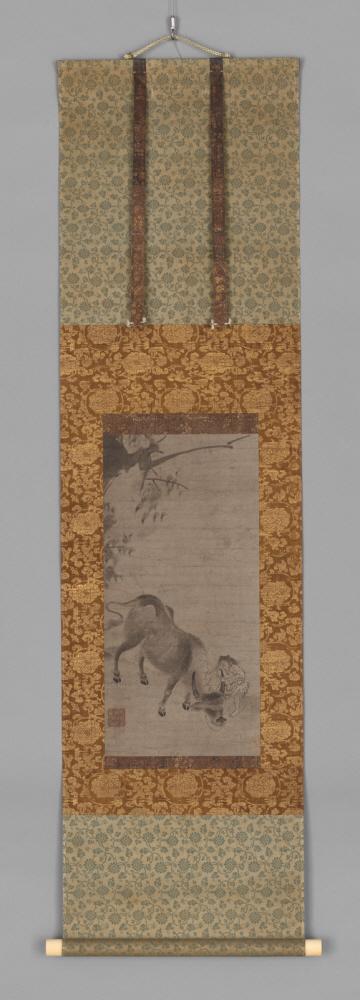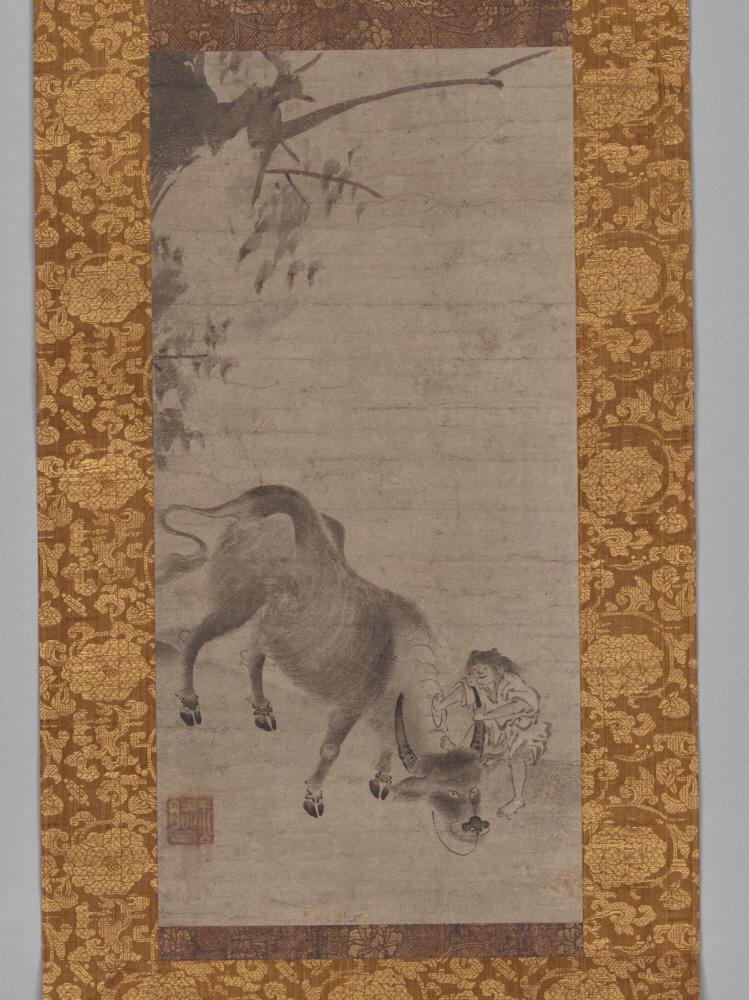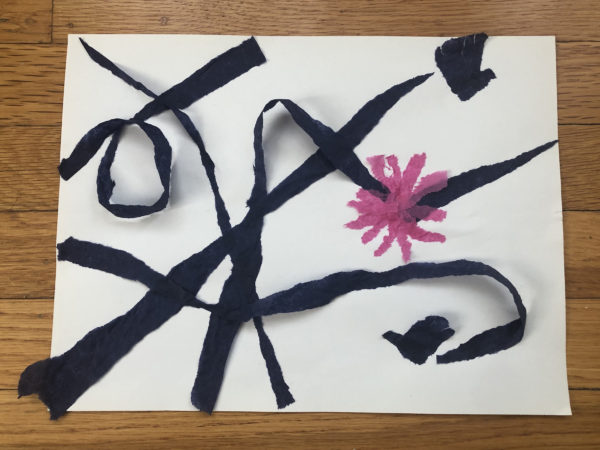Activity
The Spiritual Life of the Samurai: Meditation and Brushpainting
Objective: Students will discuss the ways in which spiritual belief supported and enhanced the military function and cultural values of the samurai. They will experience this practice through an ink painting activity.

An example of an enso; Seated Buddha Amitabha; Catching the Ox.
Content Standards Standards (California Department of Education)
English/Language Arts: Analysis 1.0, 1.1, 1.2, 1.4; Reading Comprehension 2.2; Literary Response 6.3.0, 6.3.4, 6.3.7; 7.3.0, 7.3.3; Writing Strategies 1.0, 1.1; Listening and Speaking 1.6; History/Social Science: 6.5.5; 7.5, 7.5.3, 7.5.4; Visual/Performing Arts: Historical and Cultural Context; 6.1.3, 6.1.4; 7.3.1, 7.4.2; Connections, Relationships, Applications: 6.5.3; Aesthetic Valuing: 6.4.2; 8.4.3
Materials
Artworks (see dowloads): Seated Buddha Amitabha (in the picture gallery); Catching the Ox (in the picture gallery); Ink Painting Materials: Calligraphy brushes, calligraphy paper, colored and patterned paper, glue, paper towels, ribbon, clean stones for weighing down the paper while painting, sumi ink, and two dowels (1/2” – 1” longer than the width of the painting).
Procedure
- Show the Seated Buddha Amitabha and ask the students to describe what they see.
- Have students sit quietly, close their eyes, and imitate the Buddha’s position and hand gesture (mudra) for two minutes.
- Ask them to discuss meditation. What happened? Was it difficult to sit still and quiet for that long? What was your mind doing? How might meditation help one prepare for battle? The Buddha Amitabha, shown in the image, offered the promise of a “Western Paradise,” which could be reached if someone was sincere in their belief when they died. How was this requirement consistent with the behavior expected of samurai? (loyalty and honor) Why do you think the Pure Land Buddhism, in which the Buddha Amitabha is worshipped, appealed to samurai warriors? (salvation if they died in battle)
- Show the Zen Buddhist painting, Catching the Ox. The text that goes with the image says: “With the energy of his whole being the boy has at last taken hold of the ox: But how wild his will, how ungovernable his power!” One of the core values of the samurai was discipline; discipline is as essential to a warrior going into battle as it is to a Buddhist who sits silently for a long time practicing meditation.
- Ask the class to describe what they see in the painting. Knowing how important discipline and courage were to samurai warriors, explain the lesson that the painting is teaching. Start by answering the following questions: Who or what does the boy represent? Who or what does the ox represent? (an untamed mind)
- Try a quick activity of zazen, or Zen sitting meditation. Focus on your belly as you breathe in and out. Sit still and count slowly from 1 to 10. If a thought interrupts your focus on counting, start over. Discuss how difficult it is to just focus for 10 seconds.
- Keep your mind freed and focused as you create a Zen ink painting.
Painting Procedure
- Explain: The art of ink and brush is used in painting and calligraphy. Ink is made from compressed charcoal of burned wood and brushes are made of bristles from the fur of many different animals or the fibers from plants or twigs, mounted on the end of a bamboo stick. The ink is applied to handmade paper in strokes that vary from heavy and wet to light and dry. Ink painting is done for pleasure or spiritual enlightenment.
- In Zen Buddhism, the circle is a symbol of infinity that is both empty and full. Painting a circle, or enso, is a meditation practice. Though it looks simple, to make a truly round stroke of ink with a brush where the end smoothly connects with the beginning takes practice.
- Hold your calligraphy paper down with stones. Fill your brush with sumi ink.
- Begin your circle from the lower left side of the paper, moving your stroke clockwise until it meets with the beginning. Let dry.
- Mounting your painting: Trim two narrow strips of patterned paper about ¾ inches wide and ¼ inches longer than the width of your painting.
- Apply glue to the strips and use them to mount your painting onto colored paper.
- Color the dowels black.
- Glue each dowel along the edge of your paper.
- Tie a narrow ribbon to the ends of the dowel at the top of your painting so it is ready to hang.








